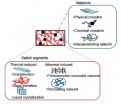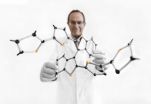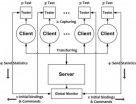(Press-News.org) Scientists have uncovered a new way the immune system may fight cancers and viral infections. The finding could aid efforts to use immune cells to treat illness.
The research, in mice, suggests that some organs have the immunological equivalent of "neighborhood police" – specialized squads of defenders that patrol only one area, a single organ, instead of an entire city, the body.
Scientists at Washington University School of Medicine in St. Louis have shown that the liver, skin and uterus each has dedicated immune cells, which they call tissue-resident natural killer cells. Other organs may have similar arrangements.
Their study, published in eLife, disproves the long-held assumption that all natural killer cells roam the body to provide the first line of defense against cancers and viruses.
"If, for example, we can use specialized medications to activate only these organ-specific cells, they could provide powerful and selective weapons against infections and tumors in the organs where they reside," said senior investigator Wayne M. Yokoyama, MD, the Sam and Audrey Loew Levin Professor of Medicine. "Cells that only defend one organ may be much better equipped than the roaming immune cells to mount an attack and limit collateral damage to healthy tissue."
Scientists have thought that mature natural killer cells circulate through the body looking for viruses and cancers. When these immune cells identify a threat, they attack. Scientists also thought that natural killer cells that stayed in the liver instead of circulating were immature or inactive and eventually would become like other natural killer cells, leaving the liver and moving through the body.
In the new study, lead author Dorothy K. Sojka, PhD, a postdoctoral research fellow in Yokoyama's laboratory, showed that some natural killer cells never leave the liver. She identified additional tissue-resident natural killer cells in the skin and uterus.
Sojka also experimented with transcription factors — molecular switches that turn a number of genes on and off. Among other results, she found that disabling one of these switches could prevent circulating natural killer cells from developing without affecting tissue-resident natural killer cells in the liver, skin and uterus. Disabling another transcription factor wiped out the liver and skin tissue-resident natural killer cells while having little effect on the circulating and uterus tissue-resident natural killer cells.
"If one group of cells absolutely needs a specific transcription factor to exist, while another group of cells doesn't care if that factor is gone, that strongly suggests the two groups of cells use distinct developmental pathways and are therefore different," Sojka said.
Her results point to at least four types of natural killer cells rather than just the one major type long recognized by immunologists. She is looking for groups of resident natural killer cells in other organs and investigating the origins and functions of those she already has identified.
"Conceptually, this is very different, a significant change in our thinking about how a very important part of the immune system works," said Yokoyama, a Howard Hughes Medical Institute Investigator.
INFORMATION:
This work was supported by NIH grants R01AI106561 and R01AI033903 and National Basic Research Project of China (973 project) (2013CB944902). CZ and JZ are supported by the Division of Intramural Research of the NIAID (US National Institutes of Health). The Rheumatic Diseases Core Center (P30AR048335) performed the speed congenics backcross. WMY is an Investigator of the Howard Hughes Medical Institute. DKS was supported by T32 CA009547.
Sojka DK, Plougastel-Douglas B, Yang L, Pak-Wittel MA, Artyomov MN, Ivanova Y, Zhong C, Chase JM, Rothman PB Yu J, Riley JK, Zhu J, Tian Z, Yokoyama WM. Tissue-resident natural killer (NK) cells are cell lineages distinct from thymic and conventional splenic NK cells. eLife, April 8, 2014. DOI: http://dx.doi.org/10.7554/eLife.01659
Washington University School of Medicine's 2,100 employed and volunteer faculty physicians also are the medical staff of Barnes-Jewish and St. Louis Children's hospitals. The School of Medicine is one of the leading medical research, teaching and patient-care institutions in the nation, currently ranked sixth in the nation by U.S. News & World Report. Through its affiliations with Barnes-Jewish and St. Louis Children's hospitals, the School of Medicine is linked to BJC HealthCare.
Some immune cells defend only 1 organ
2014-04-17
ELSE PRESS RELEASES FROM THIS DATE:
Deaths from viral hepatitis surpasses HIV/AIDS as preventable cause of deaths in Australia
2014-04-17
The analysis was conducted by Dr Benjamin Cowie and Ms Jennifer MacLachlan from the University of Melbourne and Melbourne Health, and was presented at The International Liver Congress in London earlier this month.
"Liver cancer is the fastest increasing cause of cancer deaths in Australia, increasing each year by 5 per cent, so by more than seventy people each year. In 2014 there was an estimated number of deaths of around 1,500 from liver cancer. The predominant cause is chronic viral Hepatitis," Dr Cowie said.
Hepatitis refers to the inflammation of the liver. Chronic ...
Ancient sea-levels give new clues on ice ages
2014-04-17
International researchers, led by the Australian National University (ANU), have developed a new way to determine sea-level changes and deep-sea temperature variability over the past 5.3 million years.
The findings will help scientists better understand the climate surrounding ice ages over the past two million years, and could help determine the relationship between carbon dioxide levels, global temperatures and sea levels.
The team from ANU, the University of Southampton (UoS) and the National Oceanography Centre (NOC) in the United Kingdom, examined oxygen isotope ...
Scientists find new way to fight malaria drug resistance
2014-04-17
An anti-malarial treatment that lost its status as the leading weapon against the deadly disease could be given a new lease of life, with new research indicating it simply needs to be administered differently.
The findings could revive the use of the cheap anti-malarial drug chloroquine in treating and preventing the mosquito-bourne disease, which claims the lives of more than half a million people each year around the world.
The parasite that causes malaria has developed resistance to chloroquine, but research carried out at the Australian National University (ANU) ...
Newlyweds, be careful what you wish for
2014-04-17
A statistical analysis of the gift "fulfillments" at several hundred online wedding gift registries suggests that wedding guests are caught between a rock and a hard place when it comes to buying an appropriate gift for the happy couple. The details reported in the International Journal of Electronic Marketing and Retailing suggest that most people hope to garner social benefits of buying an expensive gift that somehow enhances their relationship with the newlyweds while at the same time they wish to limit monetary cost and save money.
Yun Kyung Oh of the Department of ...
More research called for into HIV and schistosomiasis coinfection in African children
2014-04-17
Researchers from LSTM have called for more research to be carried out into HIV and schistosomiasis coinfection in children in sub-Saharan Africa. In a paper in The Lancet Infectious Diseases LSTM's Professor Russell Stothard, working with colleagues in the department of Parasitology and researchers from Cape Western Reserve University, in Cleveland Ohio, University of Cambridge and the Royal Veterinary College looked at previous research into the joint burden of HIV/AIDS and schistosomiasis of children, and found that while disease-specific control interventions are continuing, ...
Biomedical applications of shape-memory polymers: How practically useful are they?
2014-04-17
Polymers that exhibit shape-memory effect (SME) are an important class of materials in medicine, especially for minimally invasive deployment of devices. Professor Subbu Venkatraman and his group from School of Materials Science and Engineering, Nanyang Technological University presented a review article surveying the clinical applications of the SME and addressing critically the question of its utility in implantable devices. Their work, entitled "Biomedical applications of shape-memory polymers: How practically useful are they?", was published in SCIENCE CHINA Chemistry.2014, ...
More effective kidney stone treatment, from the macroscopic to the nanoscale
2014-04-17
Researchers in France have hit on a novel method to help kidney stone sufferers ensure they receive the correct and most effective treatment possible.
Kidney stones represent a major medical problem in the western and developing world. If left untreated, apart from being particularly painful, they can lead to renal failure and other complications. In many patients treated successfully, stone recurrence is also amajor problem. Clearly a more effective pathological approach to diagnosis and treatment needs to be identified to ensure successful eradication of stones.
Worldwide ...
Structure of sodium channels different than previously believed
2014-04-17
Sodium channels are implicated in many serious conditions such as heart disease, epilepsy and pain, making them an important potential target for drug therapies. Unfortunately, there is still much scientists do not know about the molecules. New Cambridge research provides fresh and unexpected insight into the structure of sodium channels and, specifically, one of its components - β-subunit molecules - which are responsible for 'fine-tuning' the activity of the channel. The research is published in the most recent edition of the Journal of Biological Chemistry.
Nerves ...
Chiral breathing: Electrically controlled polymer changes its optical properties
2014-04-17
Electrically controlled glasses with continuously adjustable transparency, new polarisation filters, and even chemosensors capable of detecting single molecules of specific chemicals could be fabricated thanks to a new polymer unprecedentedly combining optical and electrical properties.
An international team of chemists from Italy, Germany, and Poland developed a polymer with unique optical and electric properties. Components of this polymer change their spatial configuration depending on the electric potential applied. In turn, the polarisation of transmitted light is ...
Testing protocols in Internet of Things by a formal passive technique
2014-04-17
Protocol conformance and performance testing are two branches of testing designed to determine compliance and performance of protocol implementations to their standard. Dr. CHE Xiaoping and Dr. MAAG Stephane from Laboratory UMR 5157 of French Centre national de la recherché scientifique (CNRS) focus on converging these two kinds of testing in a same formal approach. After several years of innovative research, they eventually created a formal approach to formally specify conformance and performance requirements. They successfully applied their approach on Extensible Messaging ...



